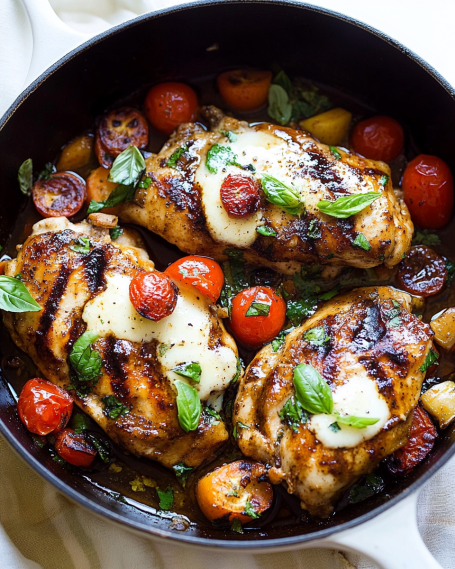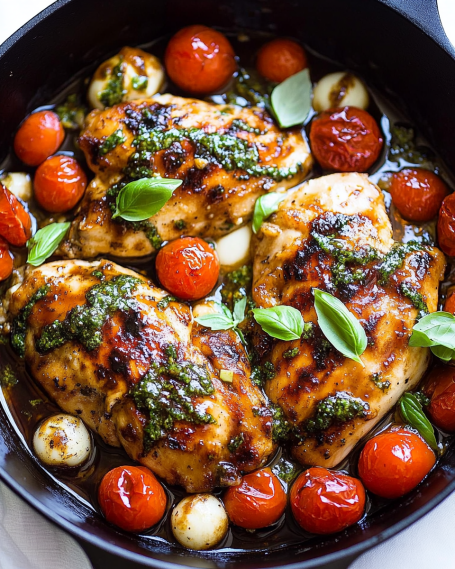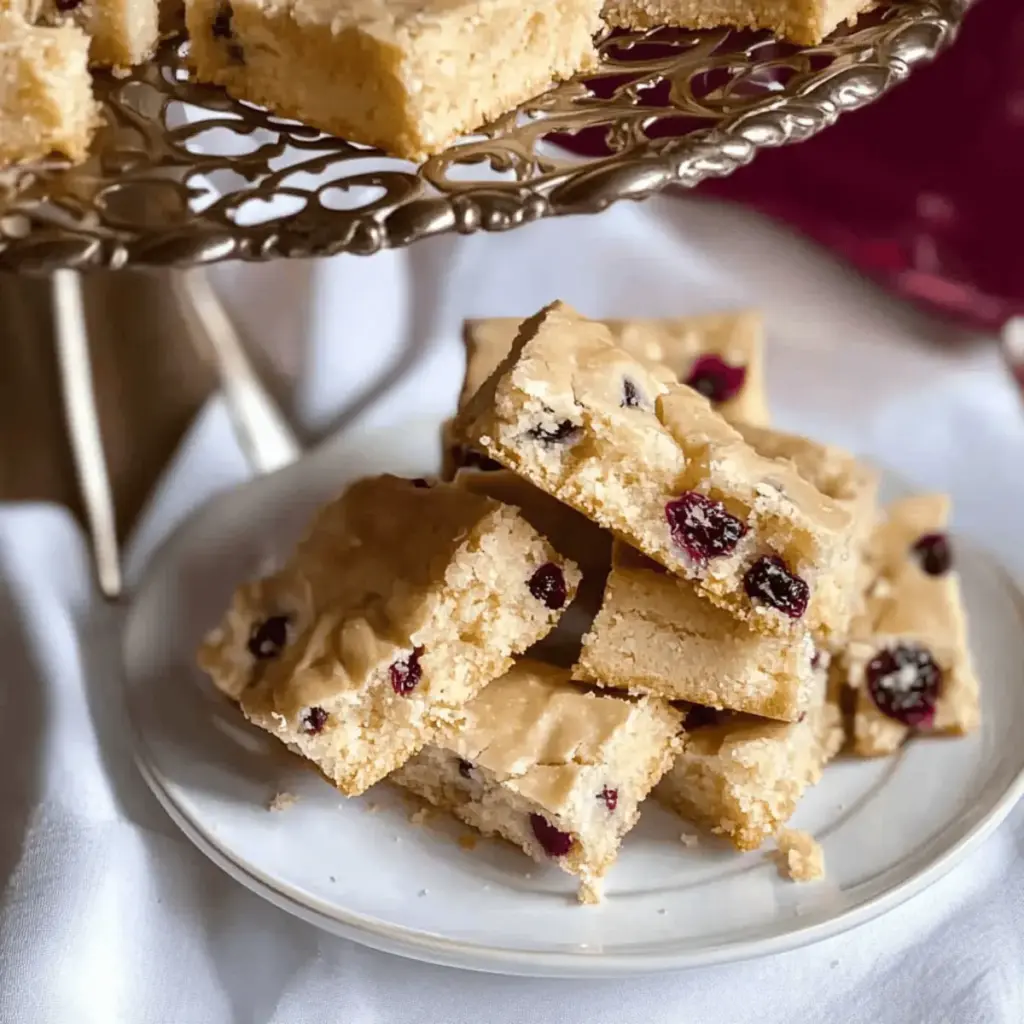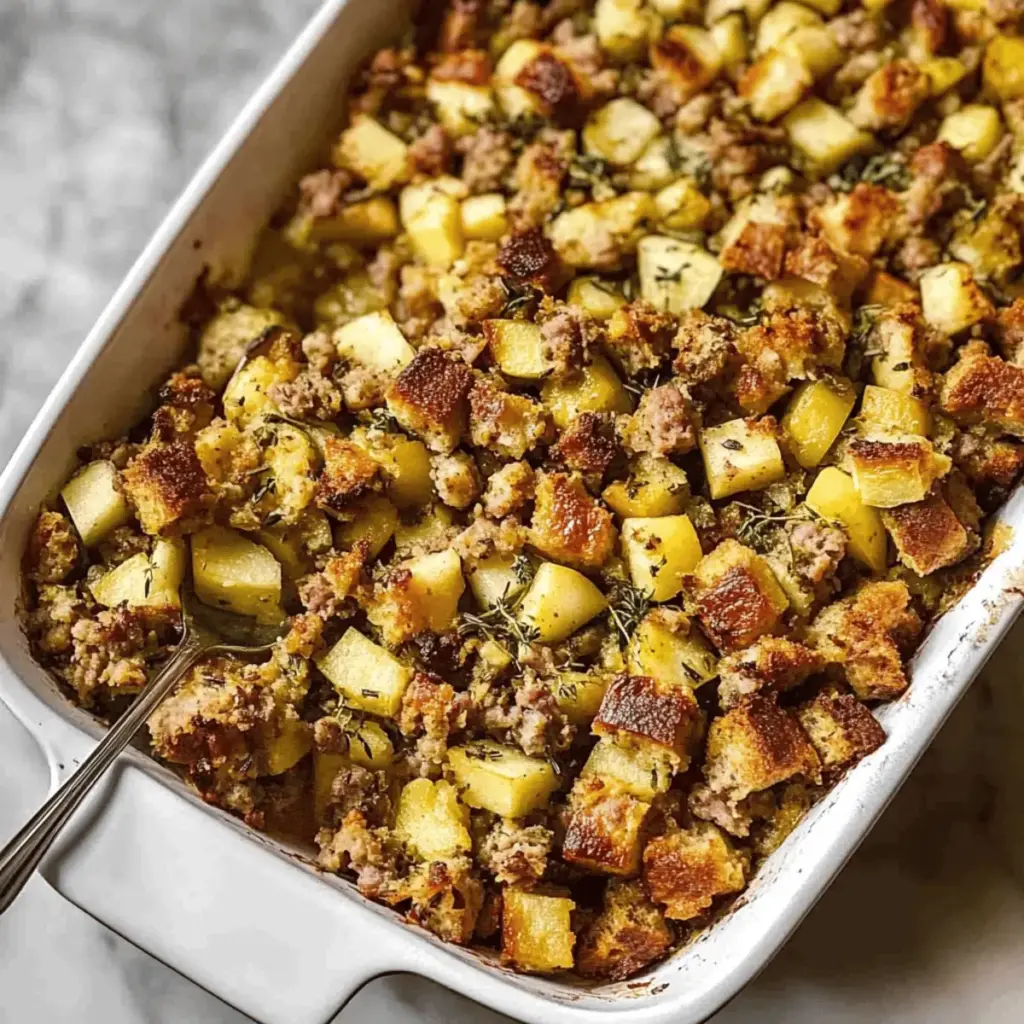Introduction to Balsamic Glazed Chicken and Vegetables
Balsamic Glazed Chicken and Vegetables is a delightful dish that brings together the rich flavors of chicken and fresh vegetables, all enhanced by a sweet and tangy balsamic glaze. This recipe is not only easy to prepare but also offers a burst of color and nutrition on your plate. Whether you’re cooking for a family dinner or a special occasion, this dish is sure to impress.
What Makes Balsamic Glazed Chicken and Vegetables Special?
What sets Balsamic Glazed Chicken and Vegetables apart is its unique combination of flavors. The balsamic vinegar adds a deep, complex taste that perfectly complements the savory chicken. When combined with honey, it creates a glaze that caramelizes beautifully in the oven, giving the chicken a mouthwatering finish.
Moreover, the addition of vibrant vegetables like bell peppers, zucchini, and cherry tomatoes not only enhances the dish’s visual appeal but also boosts its nutritional value. These vegetables are packed with vitamins and minerals, making this meal a healthy choice for any day of the week.
Another reason this dish stands out is its versatility. You can easily customize it by adding your favorite vegetables or adjusting the sweetness of the glaze. Plus, it’s a one-pan meal, which means less cleanup and more time to enjoy your delicious creation!
In summary, Balsamic Glazed Chicken and Vegetables is a special dish that combines flavor, nutrition, and convenience. It’s perfect for anyone looking to create a satisfying meal that’s both healthy and delicious.
Ingredients for Balsamic Glazed Chicken and Vegetables
To create the mouthwatering Balsamic Glazed Chicken and Vegetables, you’ll need a selection of fresh ingredients. Each component plays a vital role in building the dish’s rich flavor profile. Here’s what you’ll need:
- 2 pounds boneless, skinless chicken thighs: These are juicy and tender, making them perfect for absorbing the balsamic glaze.
- 1 teaspoon salt: This enhances the natural flavors of the chicken.
- 1/2 teaspoon black pepper: A little spice adds depth to the dish.
- 1 tablespoon olive oil: This helps to sear the chicken and adds healthy fats.
- 1 cup balsamic vinegar: The star ingredient that gives the dish its signature tangy sweetness.
- 1/4 cup honey: This balances the acidity of the vinegar and creates a lovely glaze.
- 2 cloves garlic, minced: Garlic adds a wonderful aroma and flavor.
- 1 teaspoon dried oregano: This herb complements the chicken beautifully.
- 1 teaspoon dried thyme: Another herb that enhances the overall taste.
- 1 red bell pepper, sliced: Adds sweetness and color to the dish.
- 1 zucchini, sliced: This vegetable provides a nice crunch and is low in calories.
- 1 cup cherry tomatoes, halved: These burst with flavor and add juiciness.
- 1 tablespoon fresh parsley, chopped (for garnish): This adds a fresh touch and brightens the dish.
With these ingredients, you’re well on your way to creating a delicious meal that’s sure to please everyone at the table. The combination of chicken and vegetables, along with the balsamic glaze, makes for a delightful dining experience.
Preparation of Balsamic Glazed Chicken and Vegetables
Preparing Balsamic Glazed Chicken and Vegetables is a straightforward process that involves a few simple steps. Each step is designed to enhance the flavors and ensure a delicious outcome. Let’s dive into the preparation process!
Step 1: Marinating the Chicken
Start by marinating the chicken thighs. This step is crucial as it allows the chicken to absorb the flavors. In a bowl, combine the balsamic vinegar, honey, minced garlic, oregano, and thyme. Mix well. Then, add the chicken thighs to the marinade, ensuring they are fully coated. Cover the bowl and let it marinate in the refrigerator for at least 30 minutes. If you have more time, marinating for a few hours will deepen the flavor even more.
Step 2: Preparing the Vegetables
While the chicken marinates, prepare the vegetables. Wash and slice the red bell pepper and zucchini into bite-sized pieces. Halve the cherry tomatoes. These colorful vegetables will not only add flavor but also make your dish visually appealing. Set them aside until you are ready to cook.
Step 3: Cooking the Chicken
Once the chicken has marinated, it’s time to cook. Preheat your oven to 400°F (200°C). In a large oven-safe skillet, heat the olive oil over medium-high heat. Carefully add the marinated chicken thighs to the skillet. Sear them for about 4-5 minutes on each side until they turn golden brown. This step locks in the juices and creates a nice crust. After searing, remove the chicken from the skillet and set it aside.
Step 4: Adding the Vegetables
In the same skillet, it’s time to add the vegetables. Pour in the remaining balsamic marinade and bring it to a simmer. This will help to deglaze the pan, picking up all the delicious bits left from the chicken. Next, return the seared chicken to the skillet, placing it in the center. Arrange the sliced bell pepper, zucchini, and halved cherry tomatoes around the chicken. This not only adds flavor but also makes for a beautiful presentation.
Step 5: Glazing with Balsamic Sauce
Now, it’s time to glaze the chicken. Spoon some of the balsamic mixture over the chicken thighs, ensuring they are well-coated. This glaze will caramelize as it cooks, creating a rich, sticky sauce that enhances the dish. Once everything is in place, transfer the skillet to the preheated oven. Bake for 25-30 minutes, or until the chicken reaches an internal temperature of 165°F (75°C). The vegetables will become tender and flavorful, soaking up the delicious glaze.
After baking, let the dish rest for a few minutes before serving. This allows the juices to redistribute, ensuring each bite is juicy and flavorful. Now, you’re ready to enjoy your Balsamic Glazed Chicken and Vegetables!

Variation of Balsamic Glazed Chicken and Vegetables
One of the best things about Balsamic Glazed Chicken and Vegetables is its flexibility. You can easily switch up ingredients or cooking methods to suit your taste or dietary needs. Let’s explore some alternative ingredients and different cooking methods to make this dish even more exciting!
Alternative Ingredients for Balsamic Glazed Chicken and Vegetables
If you want to mix things up, consider these alternative ingredients:
- Chicken Breasts: Instead of thighs, you can use boneless, skinless chicken breasts. They are leaner and will still absorb the delicious glaze.
- Different Vegetables: Feel free to add or substitute vegetables like asparagus, broccoli, or carrots. Each will bring its unique flavor and texture.
- Maple Syrup: For a different sweetness, try using maple syrup instead of honey. It adds a lovely flavor that pairs well with balsamic vinegar.
- Fresh Herbs: Instead of dried oregano and thyme, use fresh herbs like basil or rosemary for a vibrant taste.
- Spices: Add a pinch of red pepper flakes for a spicy kick or smoked paprika for a smoky flavor.
These alternatives can help you create a dish that suits your preferences while still keeping the essence of Balsamic Glazed Chicken and Vegetables intact.
Different Cooking Methods for Balsamic Glazed Chicken and Vegetables
While baking is a fantastic way to prepare this dish, there are other cooking methods you can try:
- Grilling: For a smoky flavor, grill the marinated chicken and vegetables. This method adds a nice char and enhances the overall taste.
- Slow Cooking: Use a slow cooker for a hands-off approach. Combine all ingredients in the slow cooker and cook on low for 6-8 hours. The chicken will be incredibly tender!
- Stovetop Sautéing: If you’re short on time, sauté the chicken and vegetables in a large skillet over medium heat. Cook until the chicken is done and the vegetables are tender.
- Air Frying: For a healthier option, try air frying the chicken and vegetables. This method gives you a crispy texture without much oil.
Experimenting with these variations can lead to new favorite recipes. Whether you choose different ingredients or cooking methods, Balsamic Glazed Chicken and Vegetables can be tailored to fit your taste and lifestyle.
Cooking Note for Balsamic Glazed Chicken and Vegetables
When preparing Balsamic Glazed Chicken and Vegetables, a few cooking notes can help ensure your dish turns out perfectly every time. These tips will enhance the flavors and textures, making your meal even more enjoyable.
First, always use fresh ingredients when possible. Fresh vegetables not only taste better but also provide more nutrients. Look for vibrant bell peppers, firm zucchini, and ripe cherry tomatoes. The quality of your ingredients can significantly impact the final dish.
Next, pay attention to the marinating time. While 30 minutes is the minimum, allowing the chicken to marinate for a few hours or even overnight will deepen the flavors. The longer the chicken sits in the marinade, the more it absorbs the delicious balsamic and honey mixture.
When searing the chicken, make sure your skillet is hot enough. A hot skillet will create a nice golden crust, locking in the juices. If the chicken sticks to the pan, it may not be ready to flip yet. Patience is key!
Also, consider the size of your vegetable pieces. Cutting them into similar sizes ensures even cooking. This way, all the vegetables will be tender at the same time, providing a delightful texture in every bite.
Lastly, don’t skip the resting time after baking. Allowing the chicken to rest for about 5 minutes before serving helps the juices redistribute. This step ensures that each piece of chicken remains juicy and flavorful.
By following these cooking notes, you’ll elevate your Balsamic Glazed Chicken and Vegetables to a new level. Enjoy the process and savor the delicious results!
Serving Suggestions for Balsamic Glazed Chicken and Vegetables
When it comes to serving Balsamic Glazed Chicken and Vegetables, presentation and pairing can elevate your dining experience. Here are some delightful serving suggestions to make your meal even more enjoyable.
First, consider serving the chicken and vegetables over a bed of fluffy rice or quinoa. This not only adds a nice texture but also helps soak up the delicious balsamic glaze. Brown rice or cauliflower rice are excellent low-carb options that complement the dish well.
Another great idea is to serve the dish alongside a fresh green salad. A simple salad with mixed greens, cucumbers, and a light vinaigrette can provide a refreshing contrast to the rich flavors of the chicken. You can also add nuts or seeds for extra crunch and nutrition.
If you want to add some carbs, crusty bread or garlic bread is a fantastic choice. The bread can be used to mop up the flavorful glaze, making every bite even more satisfying. You could also serve it with roasted potatoes or sweet potatoes for a hearty side.
For a more elegant touch, plate the chicken and vegetables on individual dishes. Drizzle extra balsamic glaze over the top and sprinkle with fresh parsley for a pop of color. This presentation is perfect for special occasions or dinner parties.
Lastly, don’t forget about beverages! A light white wine, such as Sauvignon Blanc or Pinot Grigio, pairs beautifully with the tangy flavors of the dish. If you prefer non-alcoholic options, sparkling water with a slice of lemon or a refreshing iced tea can be delightful choices.
With these serving suggestions, your Balsamic Glazed Chicken and Vegetables will not only taste amazing but also look stunning on the table. Enjoy the delicious flavors and the company of your loved ones!
Tips for Perfecting Balsamic Glazed Chicken and Vegetables
To truly master Balsamic Glazed Chicken and Vegetables, a few tips can make all the difference. These simple yet effective suggestions will help you achieve a dish that is bursting with flavor and texture. Let’s explore some key tips to elevate your cooking experience!
First, always taste your marinade before adding the chicken. This step allows you to adjust the sweetness or acidity to your liking. If you prefer a sweeter glaze, add a bit more honey. Conversely, if you want a tangier flavor, increase the balsamic vinegar. Finding the right balance will enhance the overall taste of the dish.
Next, consider using a meat thermometer to check the chicken’s doneness. This tool ensures that your chicken reaches the perfect internal temperature of 165°F (75°C). Overcooking can lead to dry chicken, while undercooking can be unsafe. A thermometer takes the guesswork out of cooking!
Another tip is to let the chicken rest after baking. This resting period allows the juices to redistribute throughout the meat, making it more tender and juicy. Cover the chicken loosely with foil while it rests to keep it warm.
When it comes to vegetables, don’t be afraid to experiment! Try adding seasonal vegetables for a fresh twist. For example, in the fall, you might include butternut squash or Brussels sprouts. In the summer, zucchini and bell peppers shine. This flexibility keeps the dish exciting and nutritious.
Lastly, garnish your dish with fresh herbs just before serving. Fresh parsley, basil, or even a sprinkle of feta cheese can add a burst of flavor and color. This final touch not only enhances the presentation but also elevates the taste.
By following these tips, you’ll be well on your way to perfecting Balsamic Glazed Chicken and Vegetables. Enjoy the process and the delicious results!
Breakdown of Time for Balsamic Glazed Chicken and Vegetables
Understanding the time required for each step in preparing Balsamic Glazed Chicken and Vegetables can help you plan your cooking efficiently. Here’s a detailed breakdown of the time involved in this delicious recipe.
Prep Time
The prep time for Balsamic Glazed Chicken and Vegetables is approximately 15-20 minutes. This includes gathering your ingredients, marinating the chicken, and preparing the vegetables. If you choose to marinate the chicken for longer, you can set it aside in the refrigerator while you prepare the rest of your meal. This step is essential for enhancing the flavors.
Cooking Time
The cooking time for this dish is about 30-35 minutes. This includes searing the chicken for about 10 minutes and then baking it in the oven for 25-30 minutes. During this time, the chicken cooks through, and the vegetables become tender and flavorful. It’s important to monitor the chicken’s internal temperature to ensure it reaches 165°F (75°C).
Total Time
In total, you can expect to spend around 45-55 minutes from start to finish. This includes both prep and cooking times. If you allow for longer marinating, the total time may extend, but the extra flavor is well worth it. With this efficient time breakdown, you can easily fit Balsamic Glazed Chicken and Vegetables into your busy schedule, making it a perfect choice for any day of the week!
Nutritional Information for Balsamic Glazed Chicken and Vegetables
Understanding the nutritional content of Balsamic Glazed Chicken and Vegetables is essential for those who are health-conscious or following specific dietary plans. This dish is not only delicious but also packed with nutrients that can contribute to a balanced diet. Let’s break down the key nutritional components of this meal.
Calories
Each serving of Balsamic Glazed Chicken and Vegetables contains approximately 350 calories. This makes it a satisfying yet light option for dinner. The combination of chicken and vegetables provides a hearty meal without excessive calories, allowing you to enjoy a flavorful dish while keeping your calorie intake in check.
Protein
Protein is a vital nutrient for building and repairing tissues, and Balsamic Glazed Chicken and Vegetables delivers on this front. Each serving offers about 30 grams of protein, primarily from the chicken thighs. This high protein content makes it an excellent choice for those looking to maintain muscle mass or support an active lifestyle.
Sodium
When it comes to sodium, this dish contains approximately 600 milligrams per serving. While sodium is necessary for bodily functions, it’s important to monitor your intake. If you’re watching your sodium levels, consider using low-sodium balsamic vinegar or reducing the amount of added salt in the recipe. This way, you can enjoy the flavors without compromising your health goals.
In summary, Balsamic Glazed Chicken and Vegetables is a nutritious meal that provides a good balance of calories, protein, and sodium. It’s a great option for anyone looking to enjoy a delicious dish while also being mindful of their nutritional intake.

FAQs about Balsamic Glazed Chicken and Vegetables
Can I use other types of vinegar for Balsamic Glazed Chicken and Vegetables?
Yes, you can use other types of vinegar if you want to experiment with flavors. While balsamic vinegar is the star of this dish, alternatives like red wine vinegar or apple cider vinegar can work well too. Just keep in mind that these vinegars may alter the taste slightly. If you choose a more acidic vinegar, consider adjusting the sweetness by adding a bit more honey or a sweetener of your choice. This way, you can still achieve a balanced flavor profile.
What vegetables pair well with Balsamic Glazed Chicken and Vegetables?
Many vegetables complement Balsamic Glazed Chicken beautifully. In addition to bell peppers, zucchini, and cherry tomatoes, you can try adding asparagus, broccoli, or even carrots. Each of these vegetables brings its unique taste and texture to the dish. Feel free to mix and match based on what you have on hand or what’s in season. The key is to choose vegetables that will cook well together and absorb the delicious balsamic glaze.
How can I make Balsamic Glazed Chicken and Vegetables ahead of time?
Making Balsamic Glazed Chicken and Vegetables ahead of time is easy! You can marinate the chicken in the balsamic mixture a day in advance. Just store it in the refrigerator until you’re ready to cook. Additionally, you can chop the vegetables ahead of time and keep them in an airtight container in the fridge. When you’re ready to cook, simply follow the recipe as usual. This makes it a great option for meal prep or busy weeknights!
Is Balsamic Glazed Chicken and Vegetables healthy?
Absolutely! Balsamic Glazed Chicken and Vegetables is a healthy meal choice. It’s packed with lean protein from the chicken and a variety of vitamins and minerals from the vegetables. The dish is relatively low in calories and can be made even healthier by using less honey or opting for a sugar-free sweetener. Plus, it’s a one-pan meal, which means less cleanup and more time to enjoy your nutritious creation. Overall, it’s a delicious way to nourish your body!
Conclusion on Balsamic Glazed Chicken and Vegetables
In conclusion, Balsamic Glazed Chicken and Vegetables is a delightful dish that combines flavor, nutrition, and convenience. This recipe is not only easy to prepare but also offers a beautiful presentation that is sure to impress your family and friends. The rich, tangy glaze made from balsamic vinegar and honey elevates the chicken, while the colorful vegetables add both taste and nutrition.
Whether you’re looking for a quick weeknight dinner or a special meal for guests, this dish fits the bill perfectly. With its versatility, you can easily customize it to suit your taste preferences or dietary needs. From swapping out vegetables to trying different cooking methods, the possibilities are endless!
Moreover, the nutritional benefits of this meal make it a smart choice for anyone aiming to maintain a balanced diet. With a good amount of protein and essential vitamins, Balsamic Glazed Chicken and Vegetables is a wholesome option that doesn’t compromise on flavor.
So, gather your ingredients, follow the steps, and enjoy the delicious results of your cooking. This dish is not just a meal; it’s an experience that brings joy to the table. Happy cooking!







